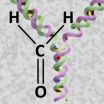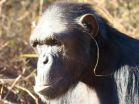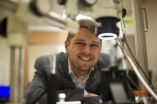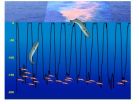(Press-News.org) ANN ARBOR, Mich. — It has been known for its flavorful addition to soups and as a delicacy for dogs but bone marrow fat may also have untapped health benefits, new research finds.
A University of Michigan-led study shows that the fat tissue in bone marrow is a significant source of the hormone adiponectin, which helps maintain insulin sensitivity, break down fat, and has been linked to decreased risk of cardiovascular disease, diabetes, and obesity-associated cancers. The findings appear in today's online-ahead-of-print issue of Cell Metabolism.
Bone marrow adipose tissue has primarily been associated with negative health effects, most notably because of a documented relationship to reduced bone mass and increased risks of fractures and osteoporosis. The new study however – which included people with anorexia, patients undergoing chemotherapy, rabbits and mice – suggests that this type of fat may also have benefits.
"These findings are significant because we've found that bone marrow adipose tissue may have positive, protective roles, and influence adaptive functions outside of the bone tissue, at least during calorie restriction," says senior author Ormond MacDougald, Ph.D., the Faulkner Professor in the Department of Molecular & Integrative Physiology, a professor of internal medicine, a member of U-M's Brehm Center for Diabetes Research, and a Fulbright Scholar at the University of Cambridge in the UK.
"We know that low adiponectin has been correlated with multiple health problems and our findings suggest that an important source of this protein, and potentially others that we haven't identified yet, is the fat tissue inside bone marrow," adds co-lead author Erica Scheller, D.D.S. Ph.D., a U-M postdoctoral fellow in the MacDougald lab.
Researchers have long studied the function of our fat, or 'adipose' tissue, in hopes of better understanding the link between obesity and ill health. One possible link is adiponectin, a hormone produced by adipose tissue that helps preserve insulin action. High levels of adiponectin are linked to decreased risk of diabetes and cardiovascular disease. People with obesity have the lowest levels of adiponectin – potentially increasing their risk for developing such diseases while the leaner someone gets, the more adiponectin they have.
An outstanding question in the field has been why adiponectin, which is produced by adipose tissue, increases as people lose body fat. A limitation in understanding this paradox is that previous research has focused on peripheral white adipose tissue, which has been believed to be the sole source of adiponectin.
The new study finds however that bone marrow fat tissue – which increases as body weight falls – is a previously unrecognized source of adiponectin during calorie restriction.
The study found that both marrow adipose tissue and adiponectin increased in humans with anorexia, and in patients undergoing chemotherapy or radiation treatment for ovarian or endometrial cancer. Researchers next used mice to study what happens when marrow fat formation is blocked and also found a relationship between bone marrow adipose tissue and adiponectin, indicating that fat tissue in marrow can have effects beyond the bone.
The research was performed with National Institutes of Health funding in MacDougald's laboratory at the U-M Medical School, and with collaborators including Clifford Rosen, M.D. of Maine Medical; Mark Horowitz, Ph.D., of Yale University, Anne Klibanski, M.D., of Massachusetts General Hospital; Susanta Hui, Ph.D., of University of Minnesota; and Venkatesh (Gary) Krishnan, Ph.D., of Eli Lilly and Company.
"Bone marrow adipose tissue has traditionally had a bad reputation because of its relationship to decreased bone mass but we now know that adipose tissue within marrow goes beyond the bone and also serves as an endocrine organ that can influence metabolism," says co-lead author William Cawthorn, Ph.D., a U-M postdoctoral fellow in the MacDougald lab.
"These findings really underscore how little we know about marrow adipose tissue, and also the mechanisms affecting circulating adiponectin levels. This is really just the beginning of much further research to better understand these relationships and their implications."
INFORMATION:
Additional Authors: Brian S. Learman, Sebastian D. Parlee, Becky R. Simon, Hiroyuki Mori, Xiaomin Ning, Adam J. Bree1, Benjamin Schell, David T. Broome, Sandra S. Soliman, Jenifer L. DelProposto, Carey N. Lumeng, Aditi Mitra, Sandeep V. Pandit, Katherine A. Gallagher, Joshua D. Miller, Venkatesh Krishnan, Susanta K. Hui, Miriam A. Bredella, Pouneh K. Fazeli, Anne Klibanski, Mark C. Horowitz, Clifford J. Rosen.
Disclosures: This work was supported in part by Eli Lilly and Company
Funding: National Institutes of Health (R24 DK092759, R01 DK62876, K99-DE-024178, R01 DK090262, 1R03AR055333, 1K12-HD055887, P30 DK089503).
Reference: "Bone marrow adipose tissue is an endocrine organ that contributes to increased circulating adiponectin during caloric restriction," Cell Metabolism, July 3.
Bone marrow fat tissue secretes hormone that helps body stay healthy
Researchers find that with calorie restriction, a less-studied fat tissue releases adiponectin, which is linked to reduced risk of diseases like diabetes
2014-07-03
ELSE PRESS RELEASES FROM THIS DATE:
NASA sees Hurricane Arthur's cloud-covered eye
2014-07-03
When NASA's Aqua satellite passed over Tropical Storm Arthur on July 2 at 2:50 p.m. EDT on July 2, it saw a cloud-covered eye as the storm was on the way to becoming a hurricane.
This visible image of Tropical Storm Arthur was captured by the Moderate Resolution Imaging Spectroradiometer or MODIS instrument that flies aboard NASA's Aqua satellite. Arthur's center was over the Atlantic Ocean and east of Florida's northeast coast. By 5 a.m. EDT on July 3, Arthur's eye had formed but remained cloud covered even as the storm hit hurricane-strength with maximum sustained ...
Cellular defence against fatal associations between proteins and DNA
2014-07-03
This news release is available in German.
DNA - the carrier of genetic information - is constantly threatened by damage originating from exogenous and endogenous sources. Very special DNA lesions are DNA-protein crosslinks - proteins covalently linked to DNA. So far hardly anything was known about repair mechanisms specifically targeting DNA-protein crosslinks. Stefan Jentsch's team at the Max Planck Institute of Biochemistry in Martinsried, Germany, now discovered a protease that is able to chop down the protein component of DNA-protein crosslinks, thereby enabling ...
'Grass-in-the-ear' technique sets new trend in chimp etiquette
2014-07-03
Chimpanzees are copycats and, in the process, they form new traditions that are often particular to only one specific group of these primates. Such are the findings of an international group of scientists, who waded through over 700 hours of video footage to understand how it came about that one chimpanzee stuck a piece of grass in her ear and started a new trend, and others soon followed suit. The findings of the study, led by Edwin van Leeuwen of the Max Planck Institute for Psycholinguistics in The Netherlands, are published in Springer's journal Animal Cognition.
In ...
GW researchers: Acute kidney injury and chronic kidney disease as interconnected syndromes
2014-07-03
WASHINGTON (July 3, 2014) — For more than 40 years, physicians have treated diminished kidney function as two distinct syndromes: acute kidney injury (AKI) and chronic kidney disease (CKD). However, recent epidemiologic and mechanistic studies suggest the two syndromes are not distinct entities, but interconnected. Published today in The New England Journal of Medicine, George Washington University (GW) researchers call for greater follow-up care of patients with AKI, who often present with CKD later in life, and vice versa.
"Our teaching has been wrong and the approach ...
Weighing up the secrets of African elephant body fat
2014-07-03
A research team from The University of Nottingham has carried out the first molecular characterisation of the African elephant's adipose tissue — body fat. This new information will form the basis of future studies aimed at securing the health and future survival of captive elephants.
The population of captive elephants, both Asian and African, in Europe and North America is not self-sustaining, largely due to poor fertility, resulting in a fewer baby elephants being born. It is acknowledged that if a solution for these reproductive difficulties cannot be found quickly, ...
Identifying microbial species
2014-07-03
Millions of microbial species populate the world, but so far only a few have been identified due to the inability of most microbes to grow in the laboratory. Edgar Goluch, an engineer, and Slava Epstein, a biologist, aim to change this. The pair, both researchers at Northeastern University, has developed a device that allows scientists to cultivate a single species of bacteria that can then be studied and identified.
Goluch's previous research devices incorporated permeable membranes that allow sequestered bacteria to be exposed to the nutrients and molecules of their ...
Women veterans want options, follow up support when dealing with intimate partner violence
2014-07-03
(Boston)--Intimate partner violence (IPV) is a significant health issue faced by women veterans, but little has been known up until now about their preferences for IPV-related care. A new study has found that most of these women support routine screening for IPV and want options, follow-up support, transparent documentation and Veterans Health Administration (VHA) and community resources. These findings appear in the journal Research in Nursing and Health.
Although women of all socio-demographic groups are at risk for IPV, population-based research suggests that women ...
Hot Pot with chicken causes campylobacter infections in Switzerland
2014-07-03
This news release is available in German and French. In Switzerland, between 7000 and 8000 persons fall ill with a campylobacter infection annually. This makes it the most frequent bacterial disease transmitted through food. Contamination of chicken meat with campylobacter bacteria during the slaughtering process is one of the known causes of the infection. An increase of campylobacteriosis case numbers is being observed throughout Europe. Human cases of campylobacteriosis must be reported to the relevant authorities in Switzerland.
In Switzerland, an unusual increase ...
Low brain protein levels associated with neurodegeneration
2014-07-03
Persons with reduced levels of the TREM2 protein could be at greater risk of developing neurodegenerative diseases such as Alzheimer's disease or frontotemporal dementia, according to an international study which included the participation of the Universitat Autònoma de Barcelona and the Sant Pau Biomedical Research Institute (IIB Sant Pau).
The study, published in Science Translational Medicine, reveals the molecular mechanism by which the mutated forms of this protein prevent the amyloid waste cleaning process from functioning correctly and detects a lower level of ...
Whales as ecosystem engineers
2014-07-03
"Consider the subtleness of the sea; how its most dreaded creatures glide under water, unapparent for the most part," wrote Herman Melville in Moby Dick. Today, we no longer dread whales, but their subtlety remains. "For a long time, whales have been considered too rare to make much of a difference in the oceans," notes University of Vermont conservation biologist Joe Roman. That was a mistake.
In a new paper, Roman and a team of biologists have tallied several decades of research on whales from around the world; it shows that whales, in fact, make a huge difference—they ...
LAST 30 PRESS RELEASES:
How does age affect recovery from spinal cord injury?
Novel AI tool offers prognosis for patients with head and neck cancer
Fathers’ microplastic exposure tied to their children’s metabolic problems
Research validates laboratory model for studying high-grade serous ovarian cancer
SIR 2026 delivers transformative breakthroughs in minimally invasive medicine to improve patient care
Stem Cell Reports most downloaded papers of 2025 highlight the breadth and impact of stem cell research
Oxford-led study estimates NHS spends around 3% of its primary and secondary care budget on the health impacts of heat and cold in England
A researcher’s long quest leads to a smart composite breakthrough
Urban wild bees act as “microbial sensors” of city health.
New study finds where you live affects recovery after a hip fracture
Forecasting the impact of fully automated vehicle adoption on US road traffic injuries
Alcohol-related hospitalizations from 2016 to 2022
Semaglutide and hospitalizations in patients with obesity and established cardiovascular disease
Researchers ‘listen in’ to embryo-mother interactions during implantation using a culture system replicating the womb lining
How changing your diet could help save the world
How to make AI truly scalable and reliable for real-time traffic assignment?
Beyond fragmented markets: A new framework for efficient and stable ride-pooling
Can shape priors make road perception more reliable for autonomous driving?
AI tracks nearly 100 years of aging research, revealing key trends and gaps
Innovative techniques enable Italy’s first imaging of individual trapped atoms
KIER successfully develops Korea-made “calibration thermoelectric module” for measuring thermoelectric device performance
Diversifying US Midwest farming for stability and resilience
Emphasizing immigrants’ deservingness shifts attitudes
Japanese eels, climate change, and river temperature
Pusan National University researchers discover faster, smarter heat treatment for lightweight magnesium metals
China’s 2024 Gastroenterology Report: marked progress in endoscopy quality and disease management
Pusan National University researchers uncover scalable method for ultrahigh-resolution quantum dot displays
Researchers use robotics to find potential new antibiotic among hundreds of metal complexes
Gut bacteria changes at the earliest stages of inflammatory bowel disease
Scientists develop new way to “listen in” on the brain’s hidden language
[Press-News.org] Bone marrow fat tissue secretes hormone that helps body stay healthyResearchers find that with calorie restriction, a less-studied fat tissue releases adiponectin, which is linked to reduced risk of diseases like diabetes




